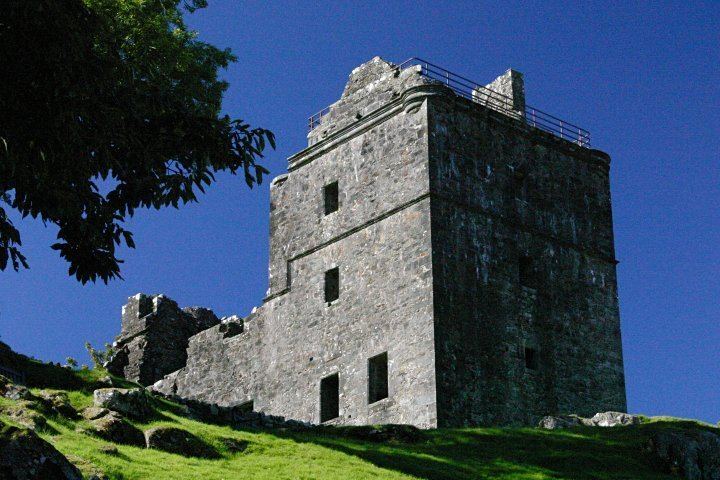 | ||
Address Carnasserie Castle, Lochgilphead PA31 8RQ, United Kingdom Similar Kilmartin Glen, Temple Wood, Dunadd, Castle Sween, Skipness Castle | ||
Carnasserie Castle (also spelled Carnassarie) is a ruined 16th-century tower house, noted for its unusual plan and renaissance detailing. It is located around 2 km to the north of Kilmartin, in Argyll and Bute, western Scotland, at grid reference NM837009.
Contents
Tour of carnasserie castle main tower near kilmartin scotland uk
History
The castle was built by reforming churchman John Carswell, who was Rector of Kilmartin, Chancellor of the Chapel Royal at Stirling, and later titular Bishop of the Isles. Carswell published the first book to be printed in Scottish Gaelic, a translation of John Knox's Book of Common Order. Construction began in 1565 using masons brought from Stirling. Although the castle was notionally built for Carswell's patron, the Earl of Argyll, he intended it as a personal residence for himself.
On Carswell's death in 1572, the castle passed to his patron, the Earl of Argyll. Later, in 1643, the 8th Earl of Argyll sold Carnasserie to Sir Dugald Campbell, 3rd Baronet of Auchinbreck. Following the 9th Earl's failed uprising in support of the Monmouth Rebellion, against James VII in 1685, the castle was blown up by Royalist forces. Although the outer walls remain largely undamaged, the ruins were never repaired. In the 19th century the estate was sold to the Malcolms of Poltalloch, who also own nearby Duntrune Castle. Today it is a Scheduled Ancient Monument in the care of Historic Scotland (no entrance fee; open in summer).
Architecture
Carnasserie has only ever been slightly altered, in the late 17th century, and so presents an accurate picture of 16th-century architecture. Although sited on raised ground close to a strategic pass at the head of Kilmartin Glen, it was designed more for domestic rather than military purposes.
The castle comprises a 5 storey tower house, with a longer three storey hall house, providing a substantial range of accommodation. At basement level are the remains of cellars and a kitchen with a large fireplace and water inlet. Above this is the large hall. This is connected to a large drawing room in the tower house, which retains its stone floor and large fireplace with carved stone decoration. A broad stair rises from the entrance to the hall, contained in a small tower to the north-west. A second smaller stair leads up from the hall to the parapet walk on three sides of the tower house. Upper rooms would have contained bedrooms.
The exterior displays numerous "double keyhole" gunloops, as well as decorative string courses and corbelling. Over the entrance are blank panels framed by carved supports, as well as the arms of the 5th Earl of Argyll with the motto DIA LE UA NDUIBHNE, "God be with O'Duine", referring to the semi-legendary ancestors of Clan Campbell. At the top of the tower are the remains of open rounds along the parapet, and a caphouse above the stair. Fragments of carved drain spouts have been found, and are on display in the cellars.
To the south and west is a partially walled courtyard garden. An archway bears the inscription SDC LHL 1681, for Sir Duncan Campbell, 4th Baronet and Lady Henrietta Lindsay, whose support for Argyll's uprising led to the castle's destruction.
